Sublethal Injuries and Physical Abnormalities in Maldives Manta Rays, Mobula alfredi and Mobula birostris
March 2022
Elspeth M. Strike, Joanna L. Harris, Kirsty L. Ballard, Julie P. Hawkins, Jennifer Crockett & Guy M. W. Stevens
Keywords: Entanglement • Boat Strike • Anthropogenic Threats • Natural Predation • Mobulid • GLMM • Bycatch
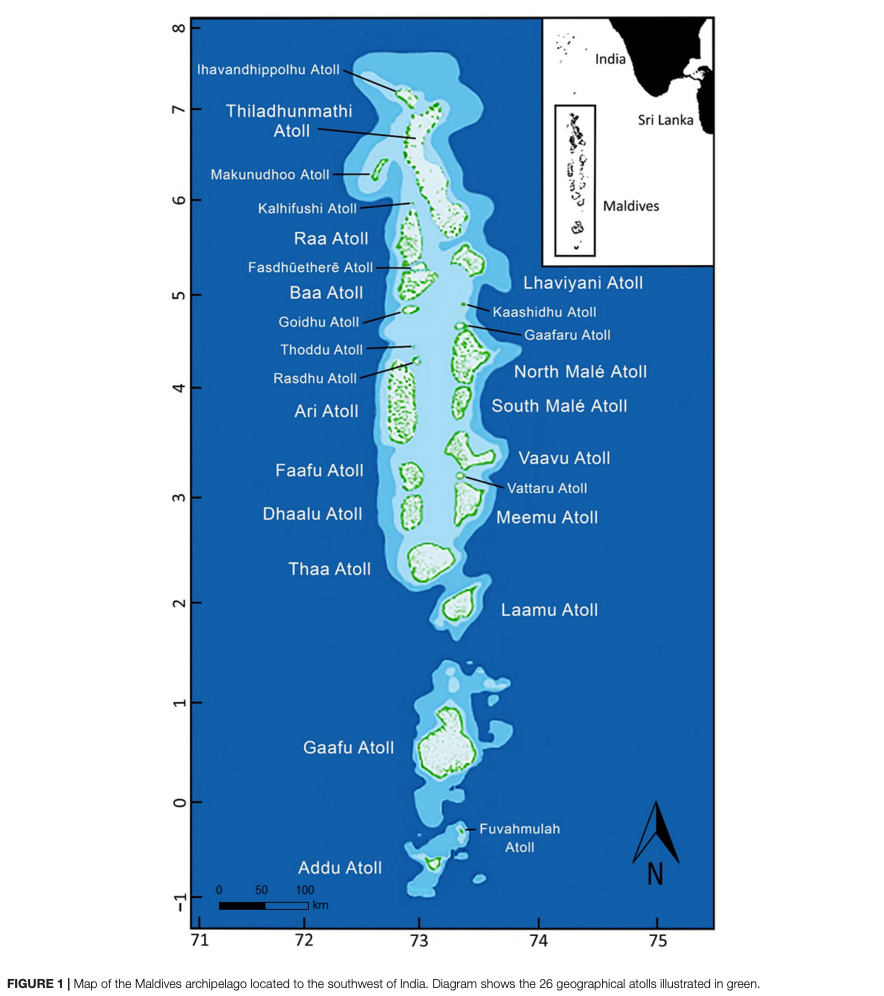
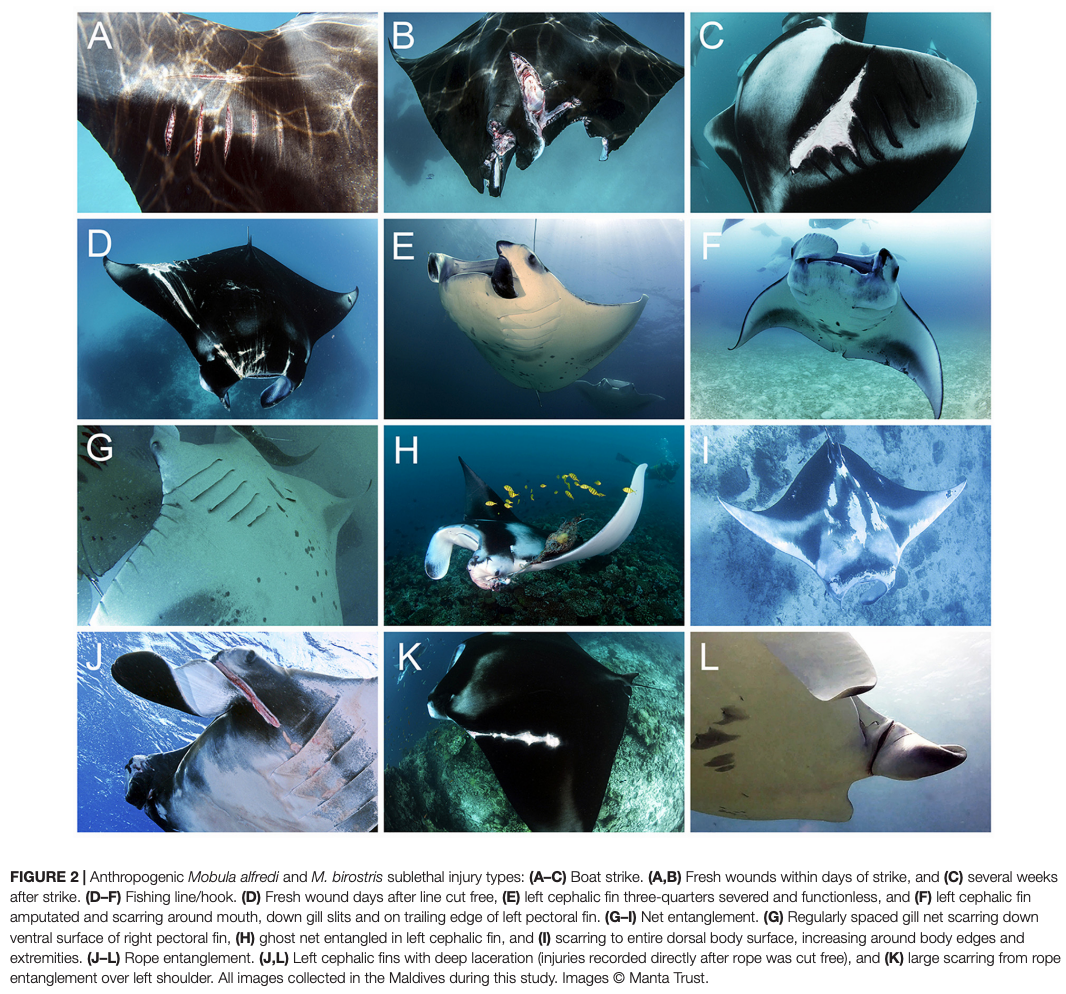
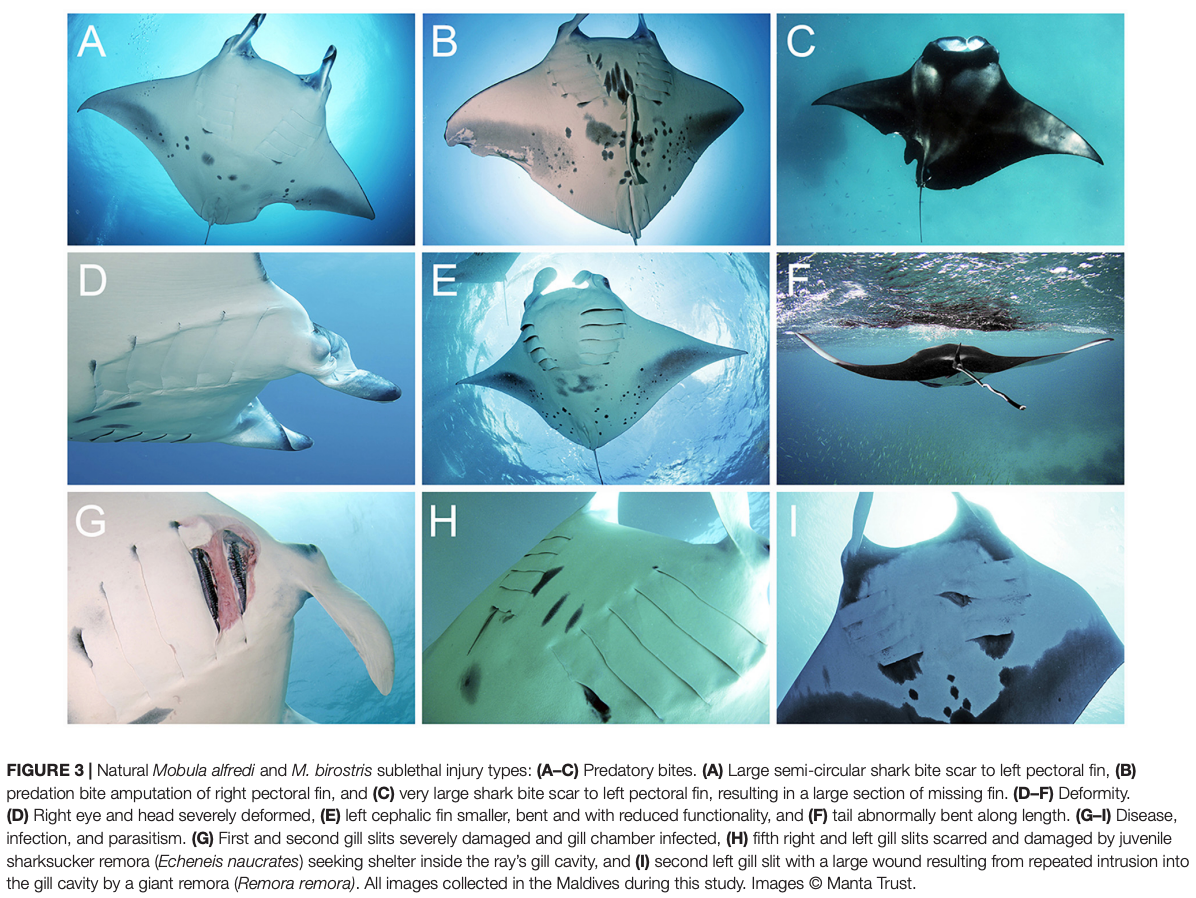
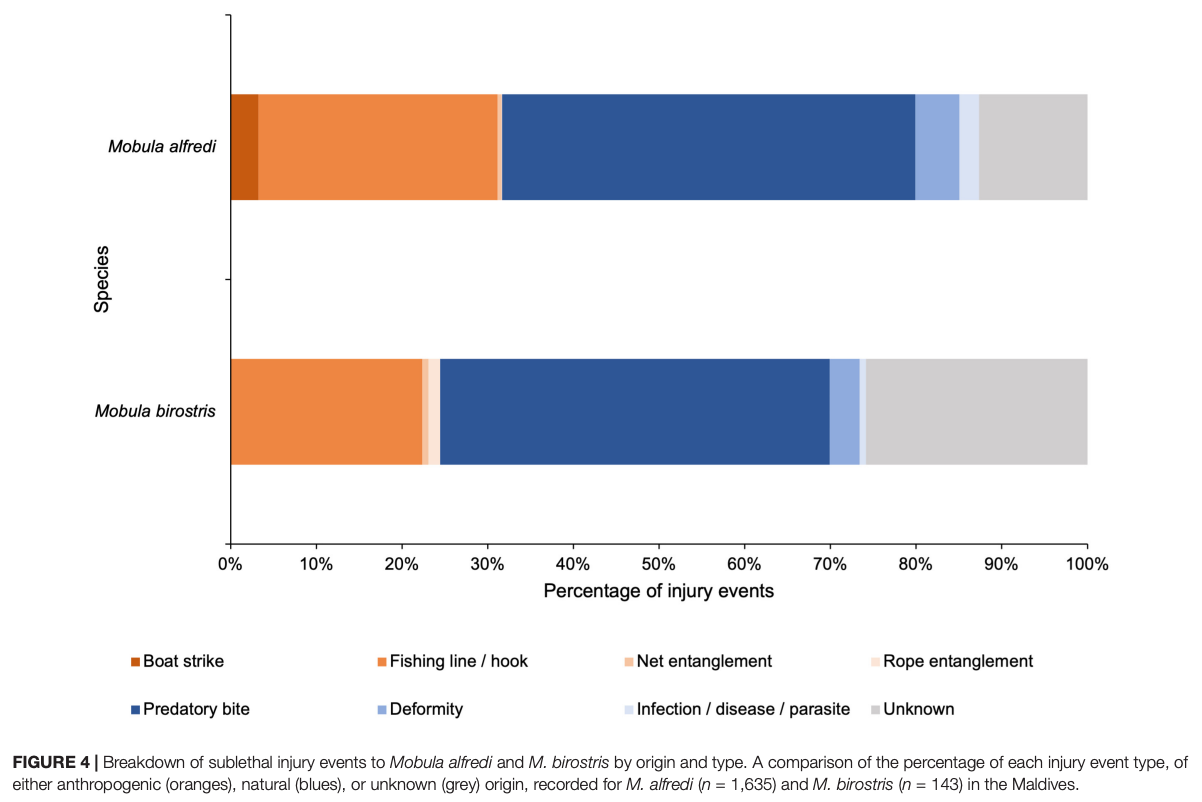
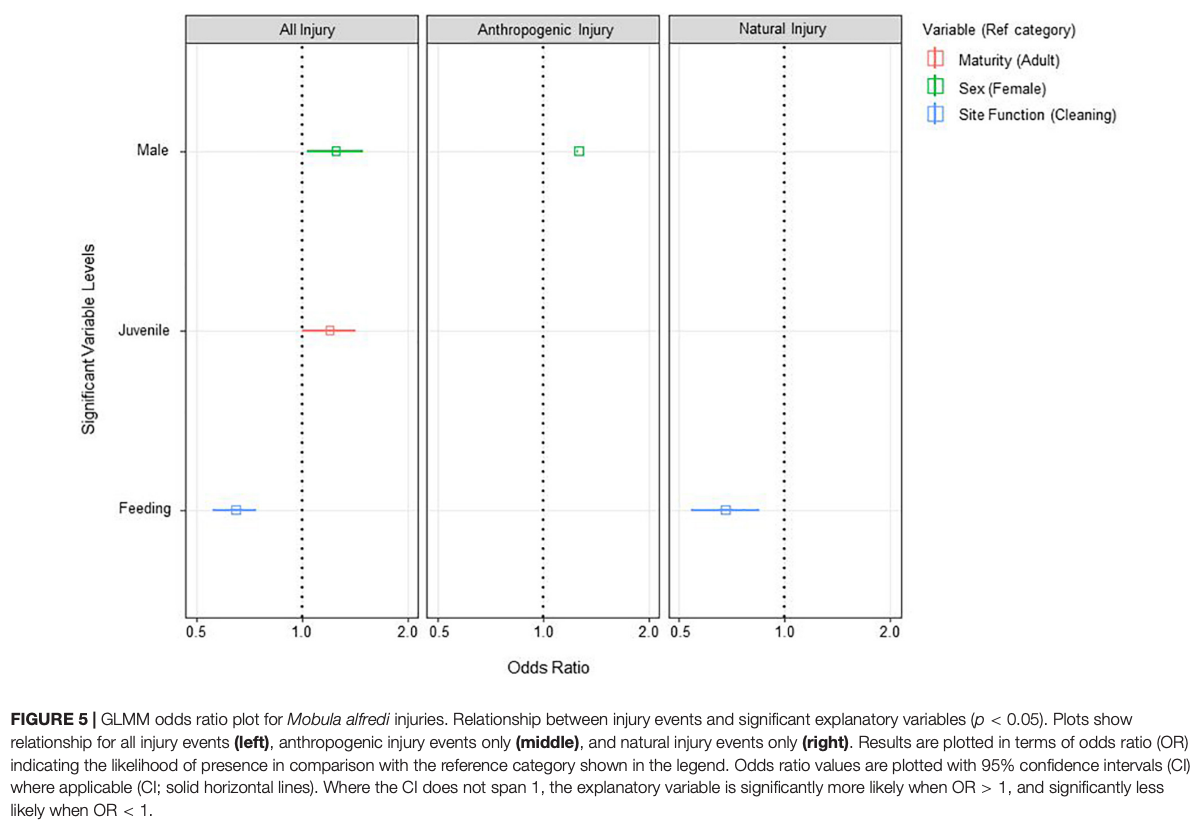
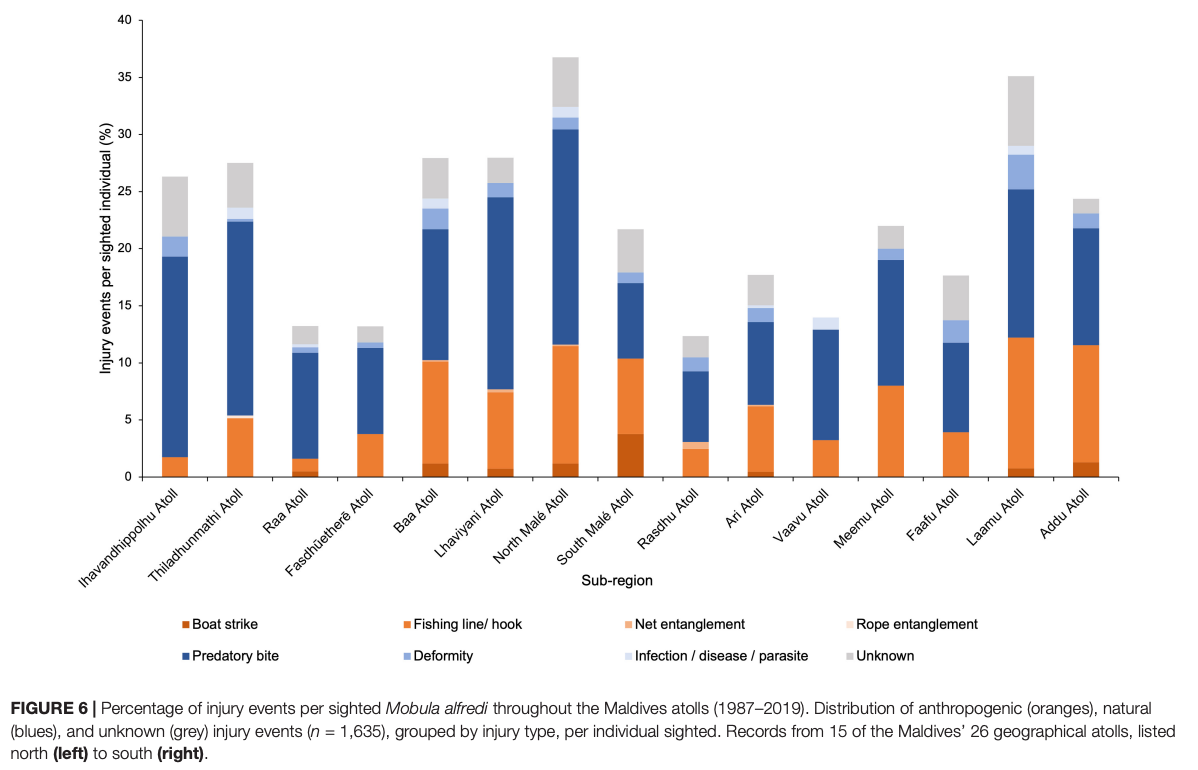
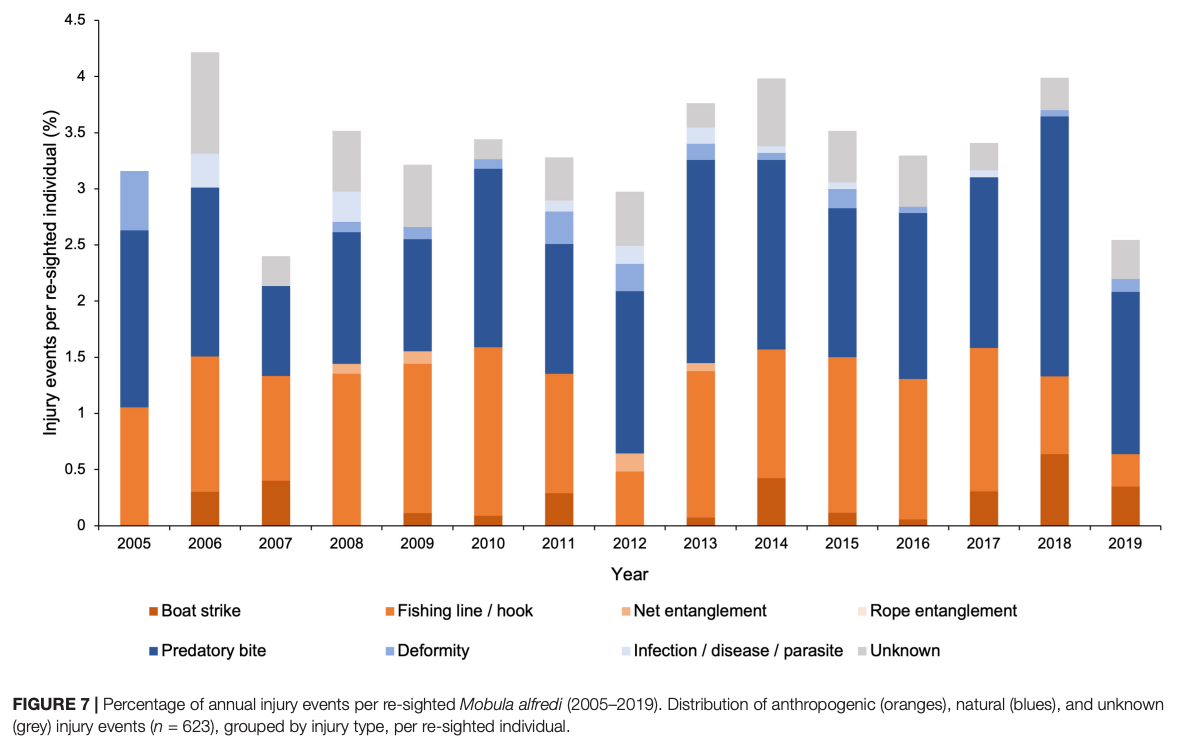
Summary: Manta rays are at risk from both natural and human-caused injuries, which can negatively impact their health, behaviour, and fitness. Researchers analysed data from manta ray sightings in the Maldives to determine the frequency and causes of injuries. This study found that natural injuries, particularly predatory bites, were more common than human-caused injuries such as entanglement in fishing line. Juveniles and males of one species were more likely to be injured, and certain areas with high levels of boat traffic, fishing, and tourism had higher rates of human-caused injuries. The study highlights the need for conservation measures to protect manta rays from sublethal threats.
Abstract
“Manta ray populations worldwide are vulnerable to sublethal injuries resulting from human activities, e.g., entanglement in fishing line and boat strikes, which have the potential to impact an individual’s health, fitness, and behaviour. Sublethal injuries and physical abnormalities also occur naturally from predation events, deformity, parasites, and disease. To determine the type and frequency of anthropogenic and natural originated injury events affecting Mobula alfredi and M. birostris in the Maldives, we examined data from the Manta Trust’s Maldivian Manta Ray Project (MMRP) database, which contains 73,638 photo-identification (photo-ID) sightings of the two manta ray species from 1987 to 2019. The likely origin of each injury or physical abnormality was determined based on visual assessment of the photo-ID images. Multiple injuries to an individual originating from the same event were grouped for analysis. Generalised linear mixed models (GLMM) were used to investigate the relationship between the occurrence of injury events and the explanatory variables sex and maturity status for both species, with the additional variable site function (cleaning, feeding, cruising) investigated for M. alfredi. Spatial and temporal variations in M. alfredi injury events, and their origin and type, were investigated by calculating the percentage of injury events per sighted individual at each Maldivian atoll, and per re-sighted individual in each year from 2005 to 2019. For both species, injury events were predominantly of natural origin, with predatory bites being the most frequent type. The most common anthropogenic injury type was entanglement in fishing line. Injuries to M. alfredi were significantly more likely to be observed on juveniles than adults, males than females, and at cleaning stations as opposed to feeding or cruising sites. Neither sex nor maturity status were significant explanatory variables for the occurrence of injuries to M. birostris. Highest percentages of anthropogenic injuries per sighted M. alfredi were recorded in North Malé, South Malé, Baa, Addu, and Laamu Atolls, where boat traffic, fishing, and tourism activities are concentrated. Overall, this work greatly improves understanding of the sublethal threats faced by manta rays in the Maldives; identifying focus areas where conservation management actions are required to ensure more effective protection of this threatened species group.”
Infographics
Author Affiliations
The Manta Trust
School of Marine Science and Engineering, University of Plymouth
Centre for Ecology and Conservation, University of Exeter
Department of Environment and Geography, University of York
Funded by
Save Our Seas Foundation
University of Exeter

